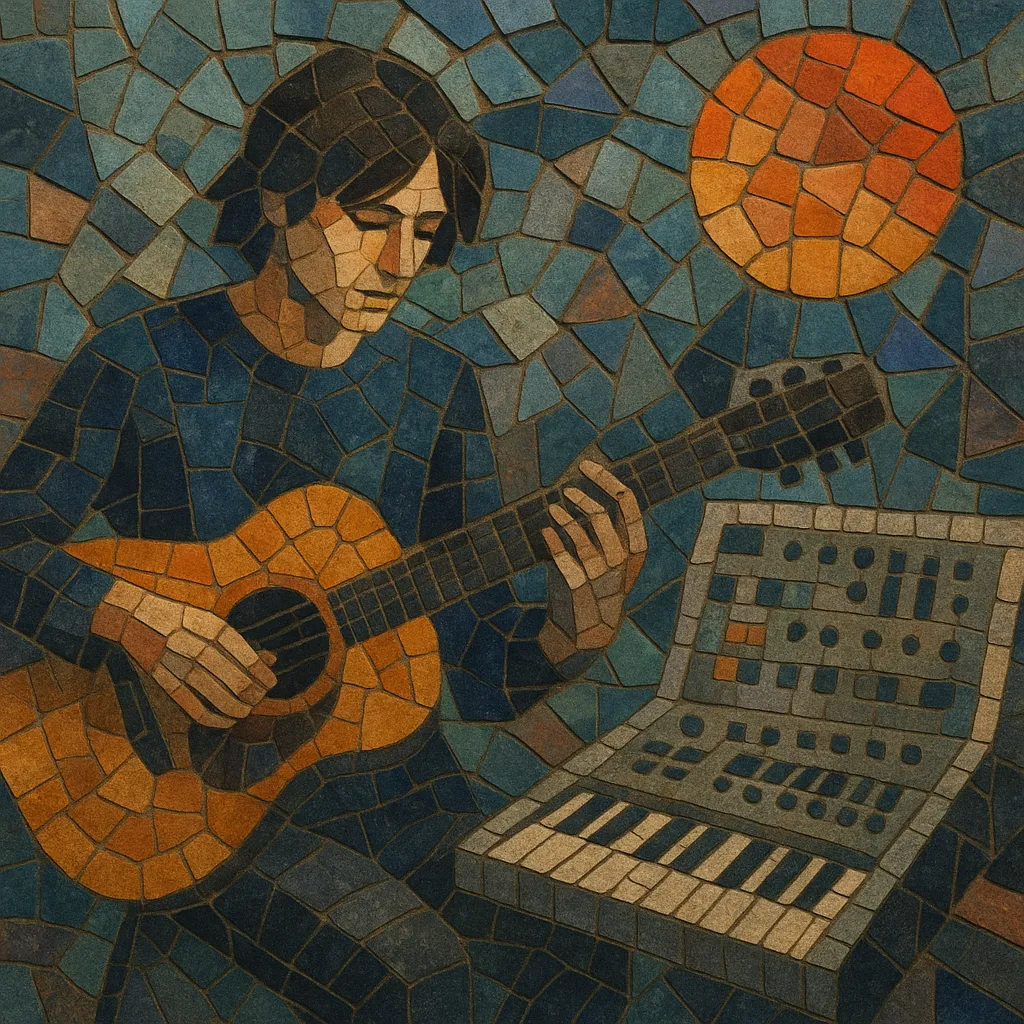
Indie electronic is a hybrid style that fuses the DIY songcraft and aesthetic of indie rock/pop with the tools, timbres, and sequencing of electronic music. Its tracks commonly combine guitars, live vocals, and organic textures with drum machines, samplers, and synthesizers.
The genre emphasizes melody and intimate, often introspective songwriting while embracing digital production techniques such as looping, sampling, sidechain compression, and sound design. Compared with mainstream EDM or pop, indie electronic tends to favor warmer tones, lo‑fi edges, and experimental arrangements, yet it remains accessible and hook-driven.
Indie electronic cohered as indie artists embraced laptops, affordable DAWs, and soft synths, blending guitar-based songwriting with electronic rhythm and texture. Earlier currents—new wave’s synth-forward pop, trip hop’s downtempo atmospheres, IDM’s intricate programming, and indie rock’s DIY ethos—provided the palette. Albums like The Notwist’s "Neon Golden" (2002) and The Postal Service’s "Give Up" (2003) signaled a watershed for song-oriented, electronically built indie.
The mid-2000s blog era accelerated the style’s spread: Hot Chip, LCD Soundsystem, and Caribou brought dance-floor energy to indie audiences, while M83 and Four Tet bridged shoegaze, post-rock, and folktronica with electronic production. MySpace, MP3 blogs, and inexpensive home studios enabled rapid cross-pollination and global visibility.
In the 2010s, the sound folded in post-dubstep, synth-pop, and R&B influences. Artists like James Blake and Grimes popularized minimalist yet emotive, sound-design-rich songwriting; Passion Pit and Purity Ring pushed glossy, hooky textures; and The xx made sparse, moody hybrids mainstream. Parallel micro-scenes (chillwave, hypnagogic pop) reflected a nostalgic, lo‑fi, synth-washed branch of indie electronic.
Indie electronic remains a flexible umbrella: bedroom producers release nuanced, song-forward electronica; bands continue to merge live instrumentation with sequenced grooves; and the scene frequently intersects with indie dance, alt-pop, and experimental club music. The core identity—indie songwriting sensibility realized with electronic means—persists across platforms and generations.
Start with a DAW (e.g., Ableton Live, Logic) and pair soft synths (virtual analog, FM, wavetable) with a few tactile instruments—guitar, bass, small keyboard, or modular bits. Use drum machines or sample packs for kicks, snares, and hats, but layer in found sounds or foley for character. Gentle saturation, tape emulation, light noise beds, and re-amping add the genre’s warm, human touch.
Favor song-friendly, diatonic progressions with occasional modal mixture (iv in major, bVII, or borrowed minor chords). Keep melodies memorable and emotive; double lead lines with synths or vocoders for texture. Pads and guitar swells can create lush backdrops, while arpeggios and ostinatos add forward motion without crowding the vocal.
Typical tempos range from 90–120 BPM, with head-nod grooves or mid-tempo dance pulses. Program drums with a mix of quantized hits and subtle humanization (swing, velocity variation). Sidechain compression (kick or ghost sidechain) can glue elements while preserving intimacy. Combine electronic patterns with small live percussion for a tactile feel.
Build around verses and choruses but allow textural intros/outros and dynamic drops. Contrast sparse, vocal-led sections with fuller, synth-layered choruses. Use automation (filters, reverb sends, bit reduction) to evolve sections. Strategic breaks and noise swells can transition between song parts without EDM-style “big drops.”
Keep vocals upfront and personal; lyrics often explore introspection, memory, and relationships. Double-tracking, harmonizers, or light pitch effects can modernize the tone while maintaining authenticity. Avoid over-quantizing phrasing—slight imperfections enhance the indie character.

